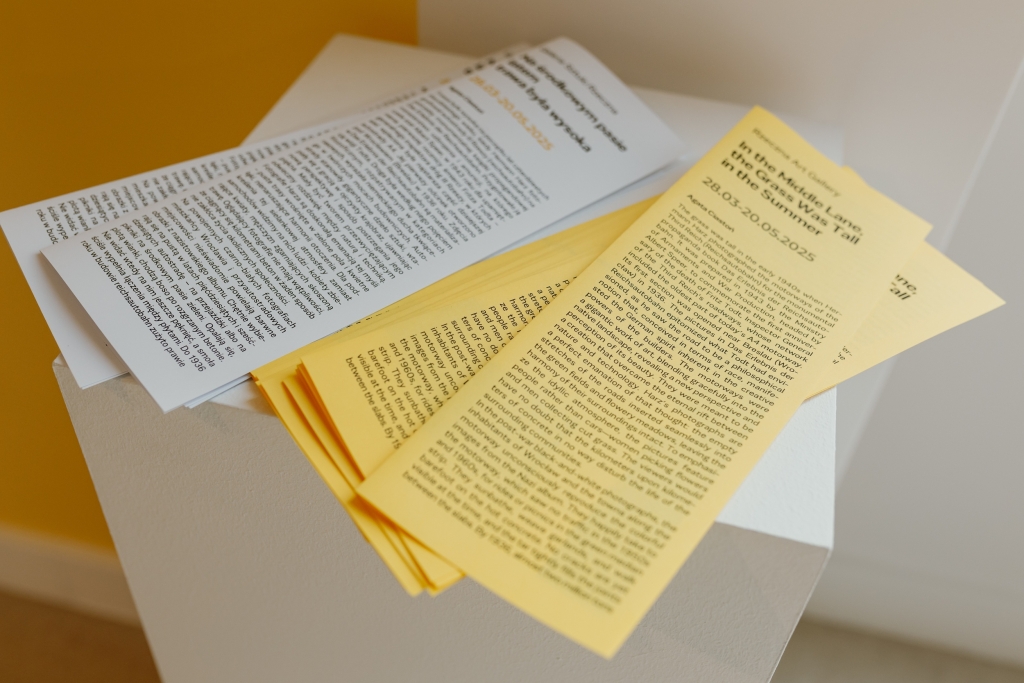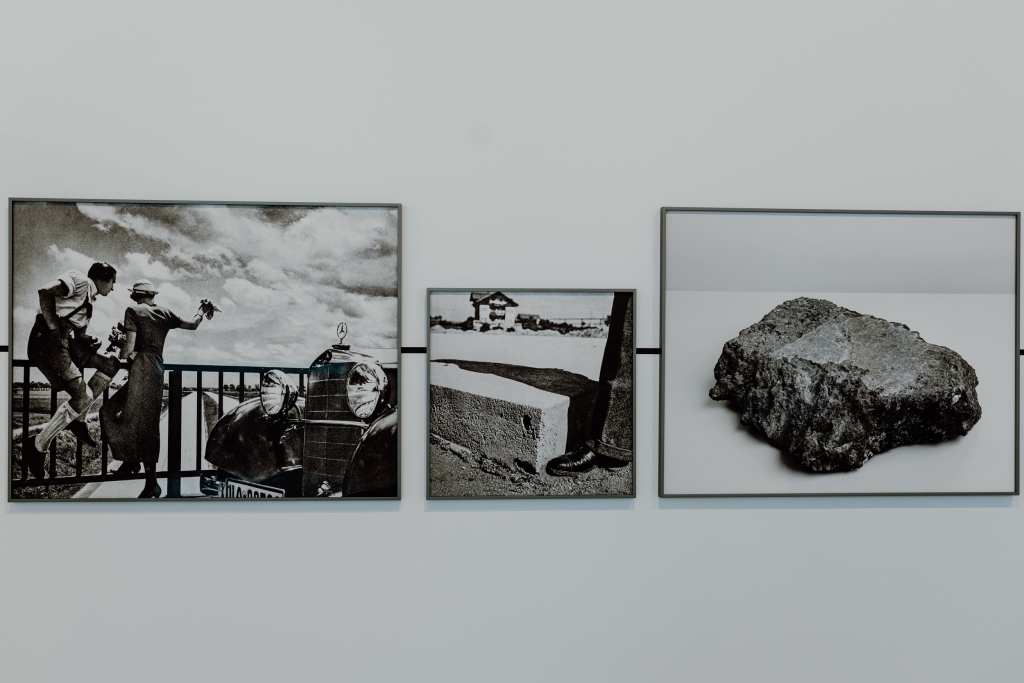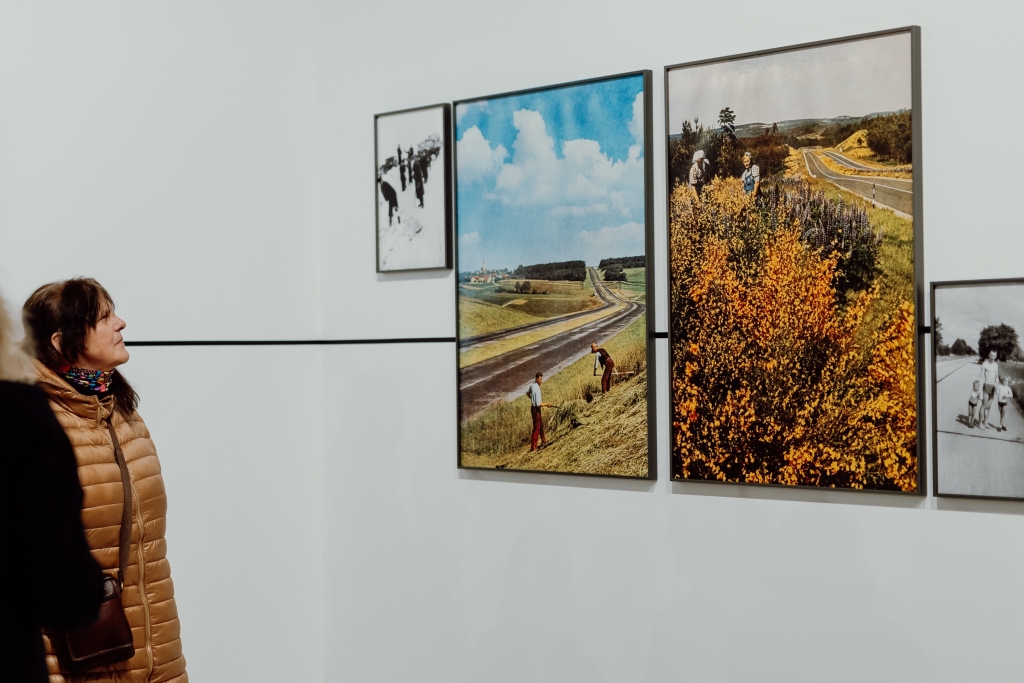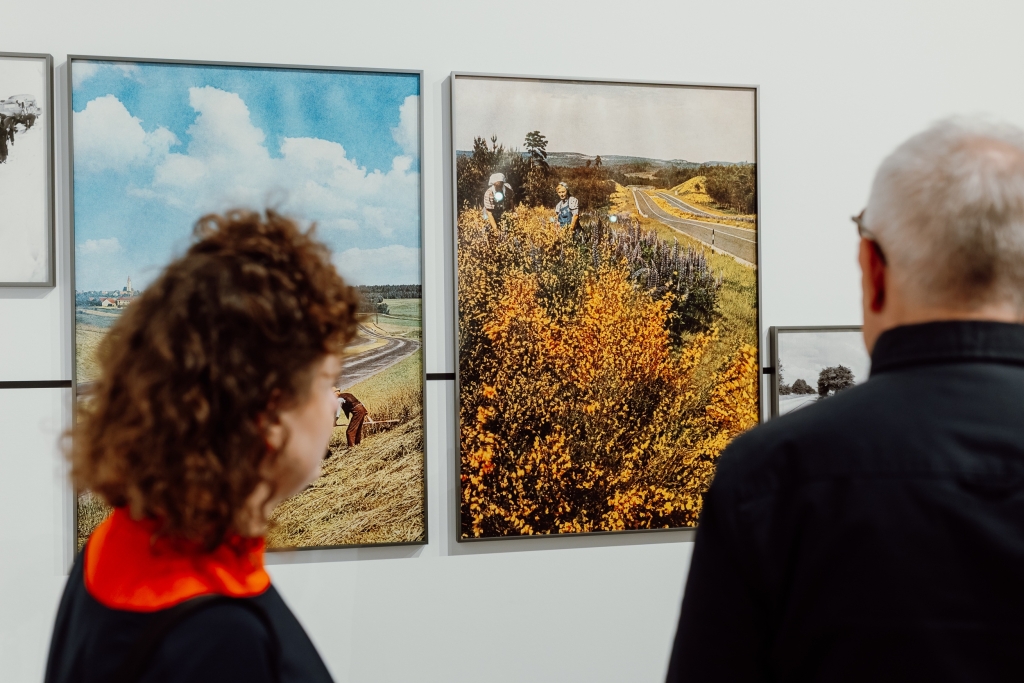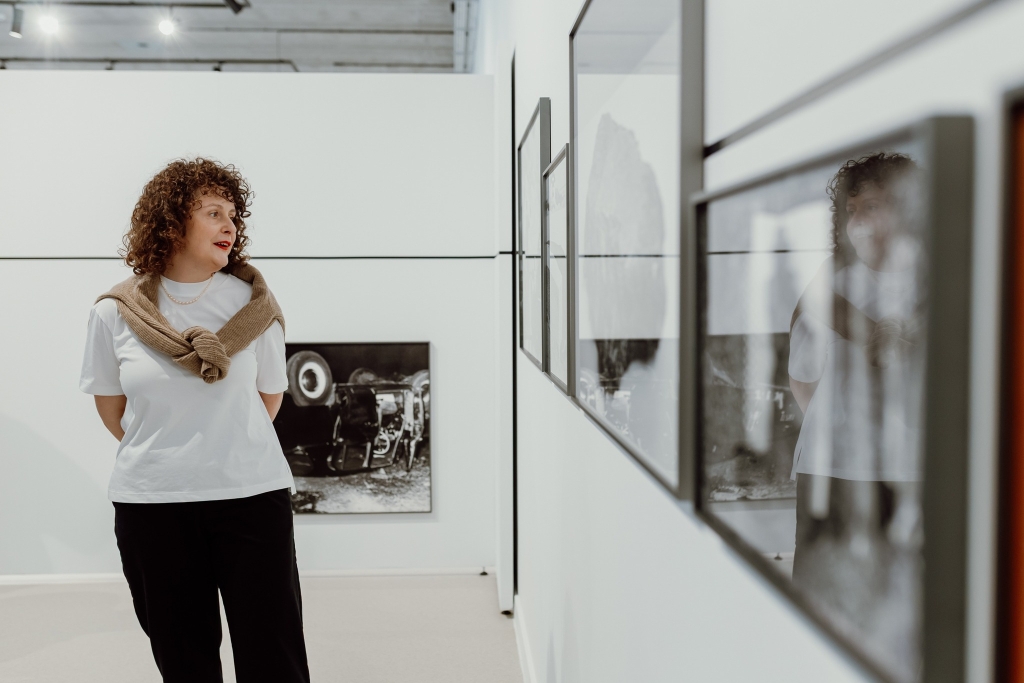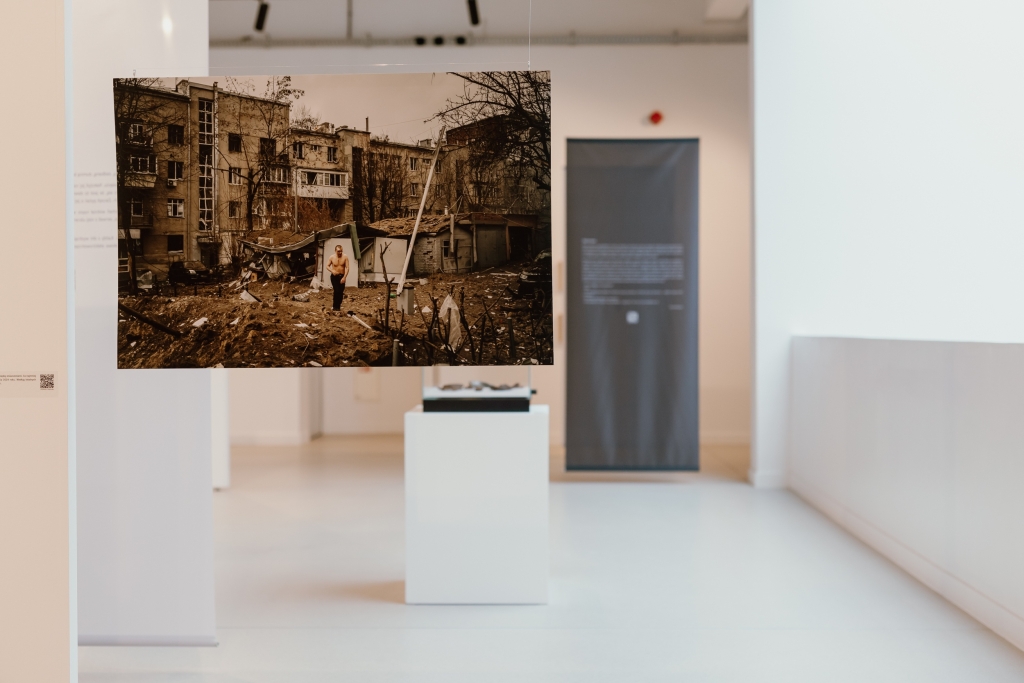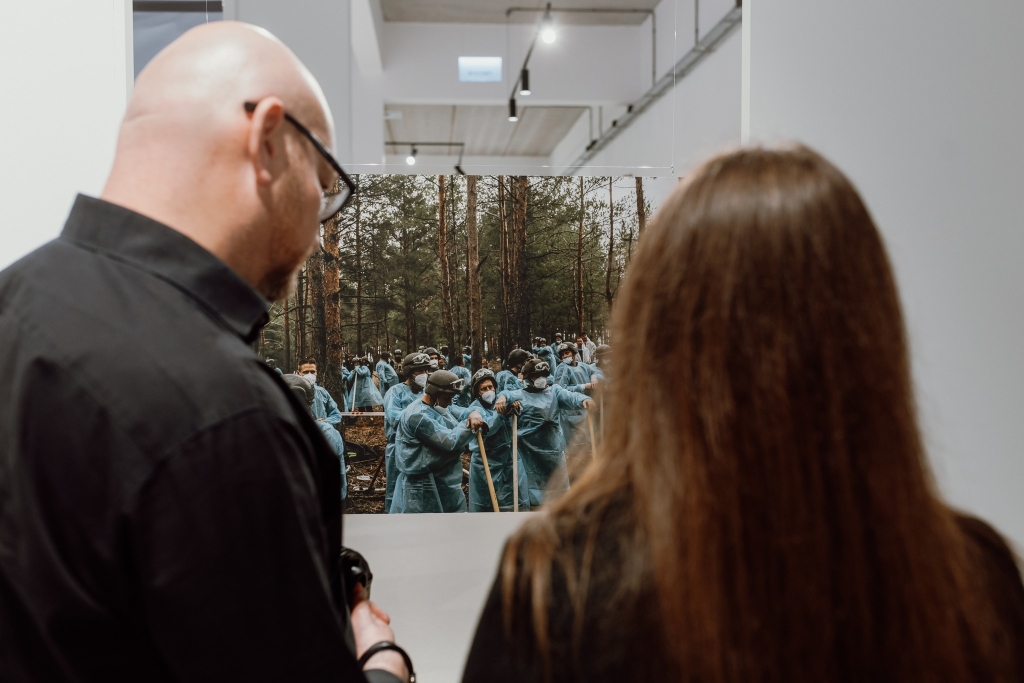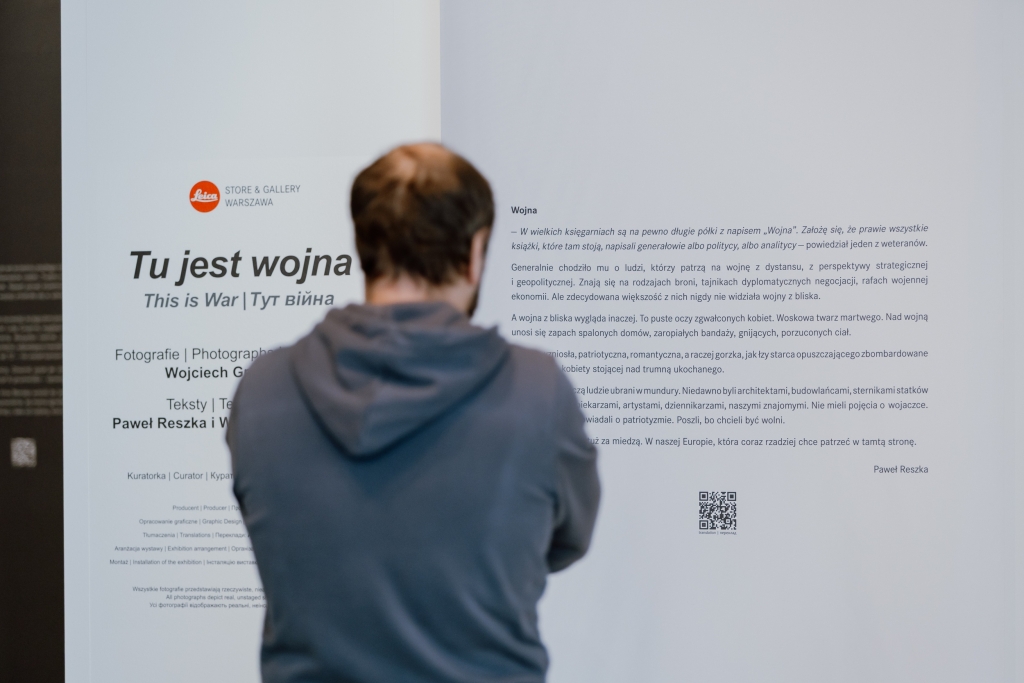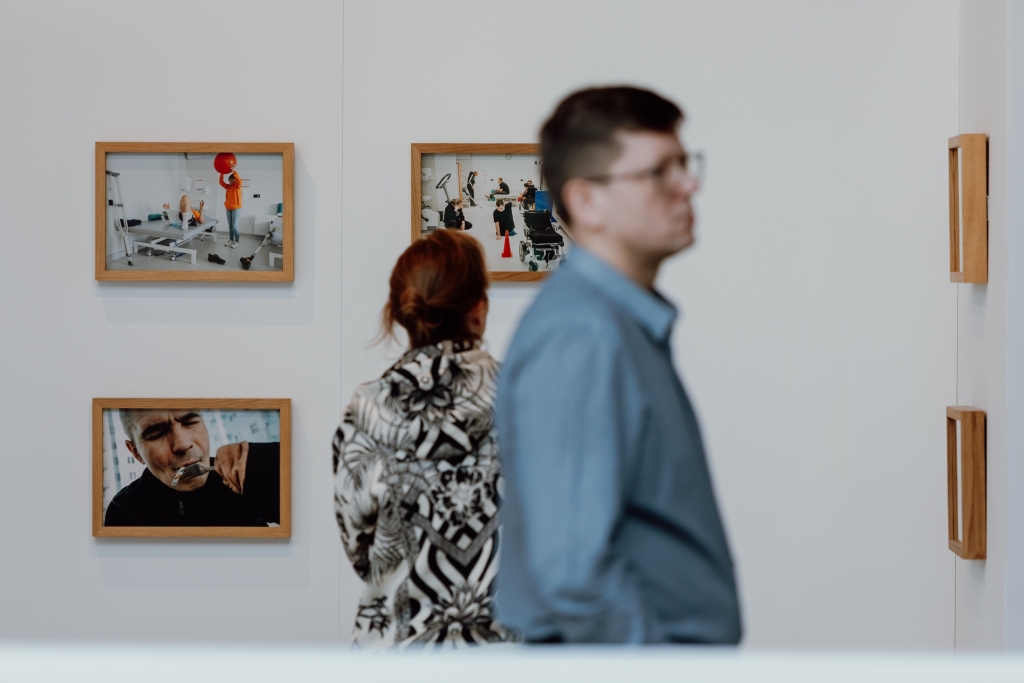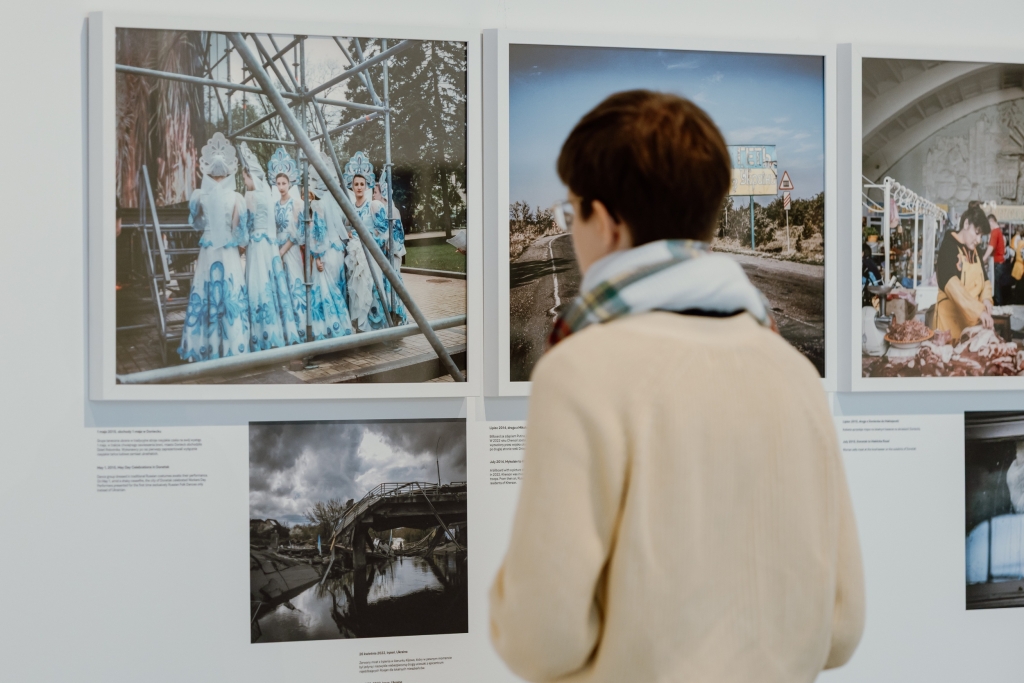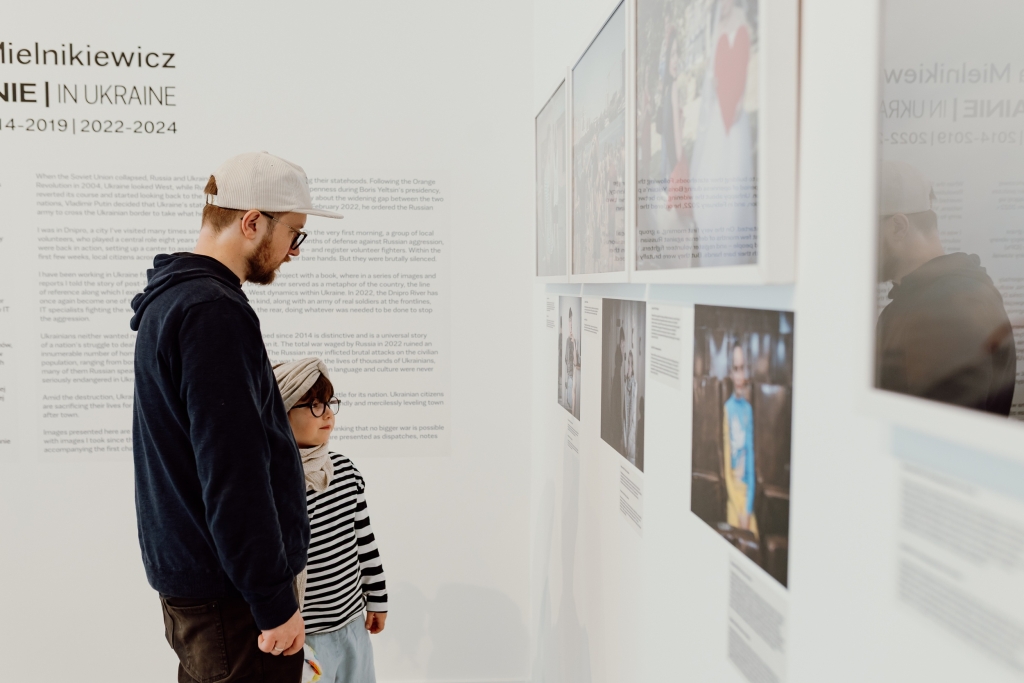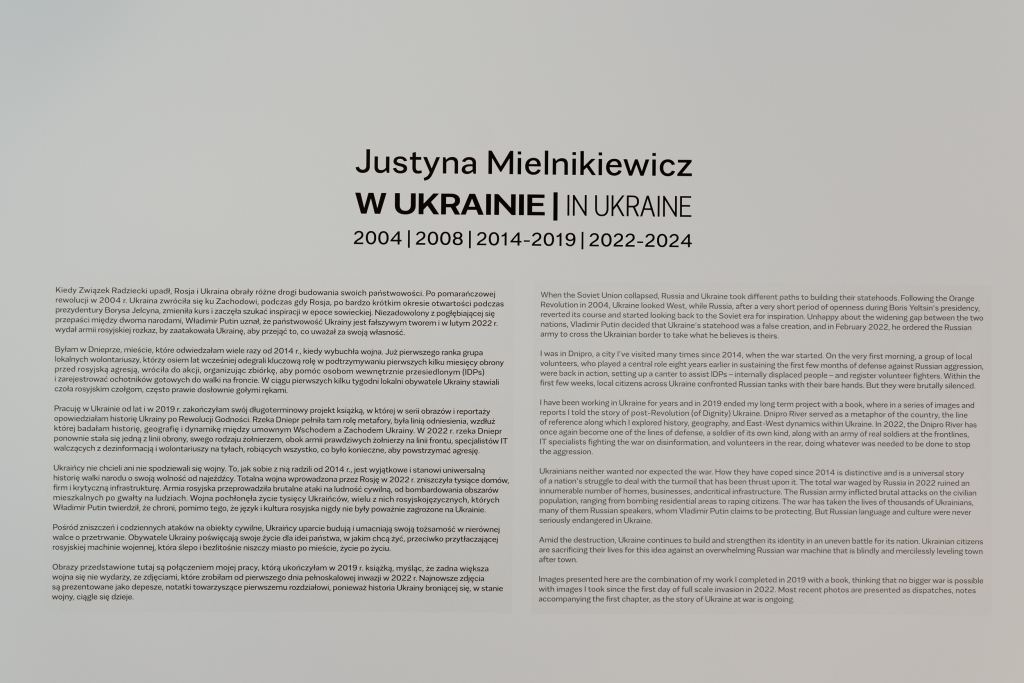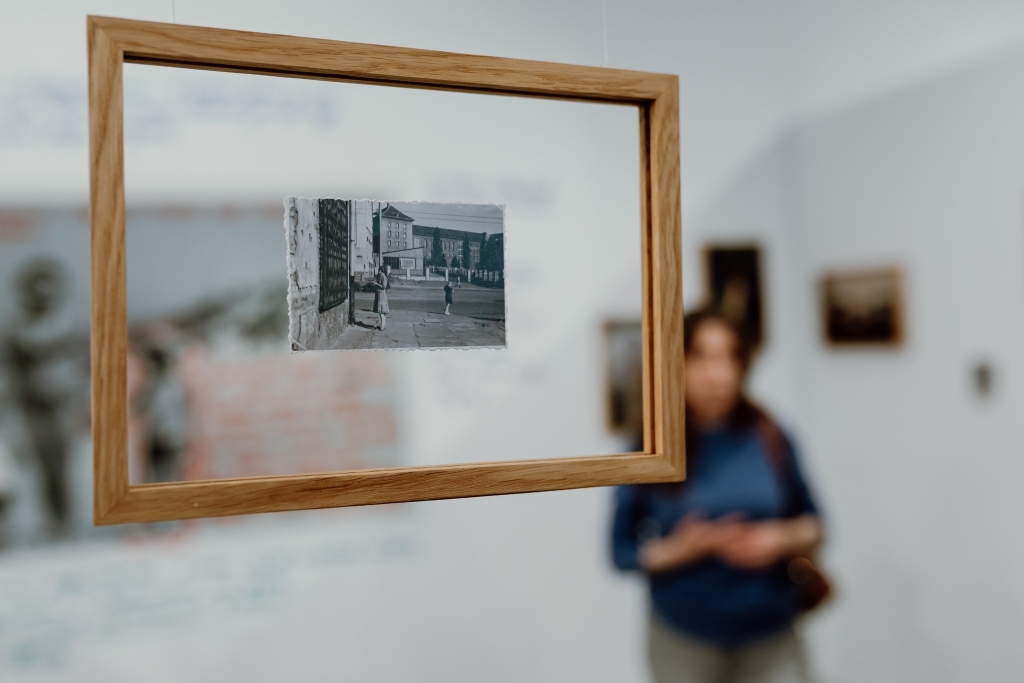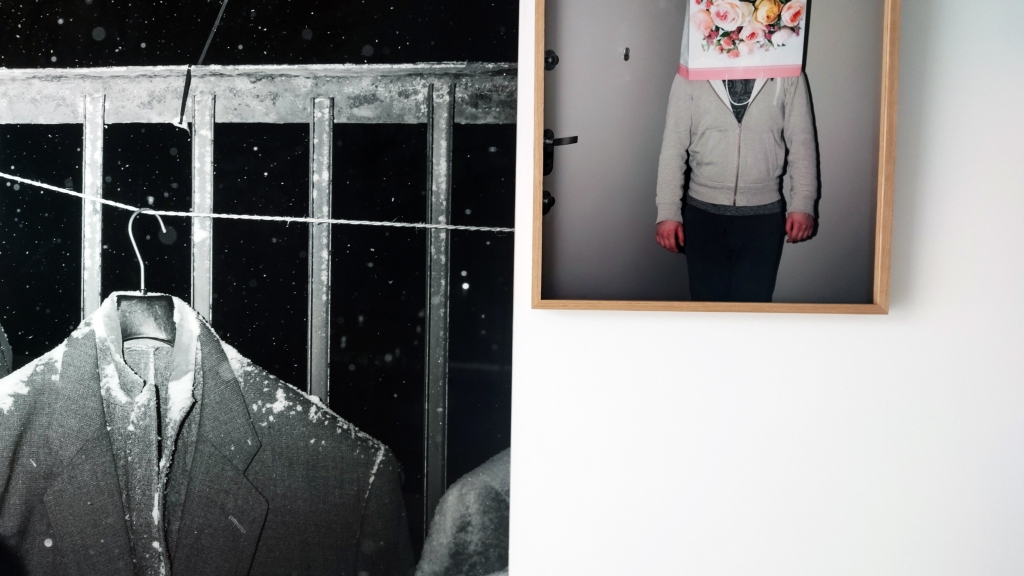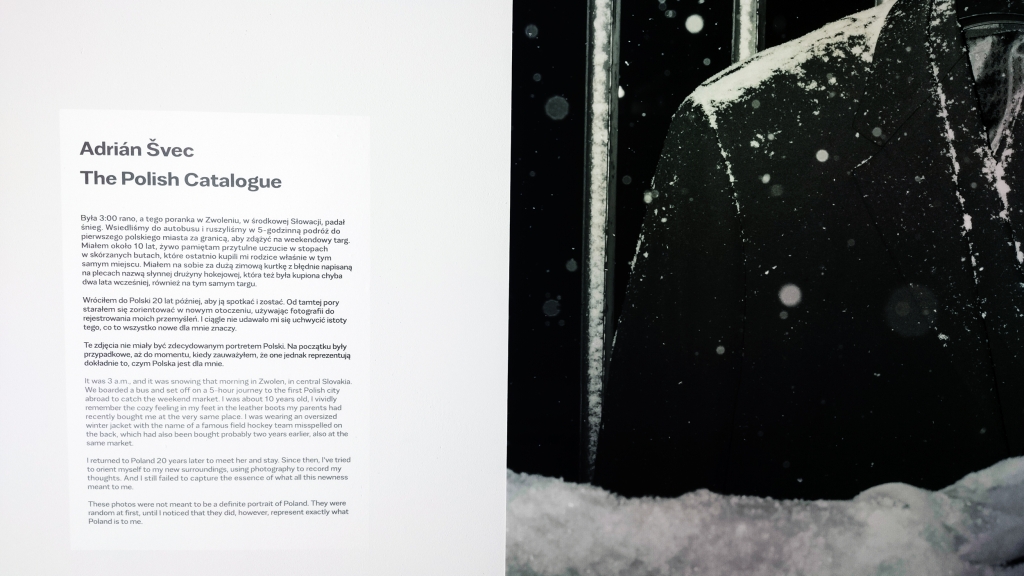About the project:
In the exhibition, the highway – a road with strictly defined parameters, with precisely calculated angles of turns – is a labyrinth. It becomes a portal transporting to the convoluted past: to the scorching summer in Lower Silesia in the late fifties, an exceptionally cold winter of 1945, the Third Reich, the Polish People’s Republic, moments of geopolitical change, far-away events, and the people whom it connected. What does the cracked highway concrete remember, which in the exhibition is both a metaphor and a genuine object? How quickly does the grass grow, and do the same butterfly species as seventy years ago fly over the highway now? The exhibition takes us on a journey, which is the destination in itself.
About the author:
Agata Ciastoń – an independent curator, researcher, and author, doctor of cultural studies. For years, she has been working with cultural institutions, educational establishments, and publishers. She came up with, coordinated, and curated collective exhibitions, including “Poetry and performance. The Eastern European perspective” and “ »Photography« Monthly 1953-1974”, as well as many solo exhibitions. She also fulfilled the role of curator during international art residencies. In her work, she is mostly interested in the broad topic of borders and territories. In her projects, the themes of polysemy of the landscape and humanity in relation to the world of animals, plants, and objects appear recurrently. In the summer of 2024, her book, “In the Middle Lane, the Grass Was Tall in the Summer”, was published with Wydawnictwo Warstwy.
Gallery
About the project:
Photography exhibition “This is War” by Wojciech Grzędziński is a moving documentary of the conflict in Ukraine, from the moment of the Revolution of Dignity in 2013, to today’s events connected with Russia’s full-scale invasion of 24th of February, 2022. Grzędziński, an exceptional Polish photojournalist, documents not only tragic events at the front, but also the everyday lives of ordinary people affected by the war. His photos, both the well-known and award-winning at the Grand Press Photo competition, and the ones displayed for the first time, tell stories through the lens of individual lives and tragedies that stay in memory for a long time. Grzędziński’s photos are accompanied by texts by Paweł Reszka, an acclaimed journalist and war correspondent.
Together they create a story about everyday life in times of war – both at the front, and in faraway places, where war also changes lives. The exhibition isn’t limited to only photographs – it also contains movies, slideshows, and artifacts, which widen the context and allow for a better understanding of the war. An integral part of the exhibit are extensive descriptions, comments, and articles in the form of material sheets hanging from the ceiling. All texts have been translated into English and Ukrainian, which makes the exhibition more accessible to the international audience.
Attention! War directly affects life and health. Exhibit “This is War” displays authentic texts and images from the war in Ukraine. You may not be prepared for this. Underage people may visit the exhibit under parental supervision.
About the authors:
Wojciech Grzędziński – photojournalist. Born in 1980 in Warsaw. Prize-winner of many photography competitions: World Press Photo, Visa D’Or, NAPA, Sony World Photography Awards, Grand Press Photo, and others. Author of the Photo of 2009 and Photo of the Decade (2014) in the BZWBK Press Photo competition. Juror of Polish competitions, both national and local. In his photography, he is interested in humanity and emotions. He repeatedly photographed in war zones and immortalized the consequences of armed conflict. In 2011-2015, he supervised the team of photographers in the Chancellery of the President of the Republic of Poland and was the personal photographer to the President of the Republic of Poland. Stipendist to the Minister of Culture and National Heritage for 2014 and 2018. A member of the Union of Polish Photography Artists (ZPAF) and Press Club Polska. Since February 2022, he has documented the war in Ukraine.
Paweł Reszka – journalist, war correspondent (among others in Georgia and Ukraine), best-selling books author. He collaborated with “Rzeczpospolita” as a correspondent in Moscow. He was the leader of the investigation department for “Dziennik”. He wrote for “Newsweek Poland” and “Tygodnik Powszechny”. Since 2019, he’s been a journalist for “Polityka” weekly. His most well-known books are “Mali Bogowie”, “Chciwość. Jak nas oszukują wielkie firmy”, and “Czarni”, among others. He is a two-time winner of the prestigious Radio ZET award named after Andrzej Woyciechowski.
Curator of the exhibition: Monika Szewczyk-Witek
The Producer and Partner of the exhibition is Leica Store & Gallery Warszawa
Gallery
No one is able to live a healthy, safe and dignified life without clean and affordable energy. That’s why it’s time to take action to ensure no one has to choose between eating, lighting or warming their home ever again.
With energy prices spiralling out of control since 2021 and the climate getting more and more chaotic, citizens from Lisbon to Plovdiv provide an insight into what is needed for a Europe without energy poverty.
About the author:
Originally from New Zealand, Miriam Strong is a photographer and filmmaker with a focus on lifestyle and documentary. Her work stems from a desire to tell stories and explore issues beyond the confines of single images. She is currently based in London but works internationally.
When the Soviet Union collapsed, Russia and Ukraine took different paths to building their statehoods. Following the Orange Revolution in 2004, Ukraine looked West, while Russia, after a very short period of openness during Boris Yeltsin’s presidency, reverted its course and started looking back to the Soviet era for inspiration. Unhappy about the widening gap between the two nations, Vladimir Putin decided that Ukraine’s statehood was a false creation, and in February 2022, he ordered the Russian army to cross the Ukrainian border to take what he believes is theirs.
I was in Dnipro, a city I’ve visited many times since 2014, when the war started. On the very first morning, a group of local volunteers, who played a central role eight years earlier in sustaining the first few months of defense against Russian aggression, were back in action, setting up a canter to assist IDPs – internally displaced people – and register volunteer fighters. Within the first few weeks, local citizens across Ukraine confronted Russian tanks with their bare hands. But they were brutally silenced.
I have been working in Ukraine for years and in 2019 ended my long term project with a book, where in a series of images and reports I told the story of post-Revolution (of Dignity) Ukraine. Dnipro River served as a metaphor of the country, the line of reference along which I explored history, geography, and East-West dynamics within Ukraine. In 2022, the Dnipro River has once again become one of the lines of defense, a soldier of its own kind, along with an army of real soldiers at the frontlines, IT specialists fighting the war on disinformation, and volunteers in the rear, doing whatever was needed to be done to stop the aggression.
Ukrainians neither wanted nor expected the war. How they have coped since 2014 is distinctive and is a universal story of a nation’s struggle to deal with the turmoil that has been thrust upon it. The total war waged by Russia in 2022 ruined an innumerable number of homes, businesses, andcritical infrastructure. The Russian army inflicted brutal attacks on the civilian population, ranging from bombing residential areas to raping citizens. The war has taken the lives of thousands of Ukrainians, many of them Russian speakers, whom Vladimir Putin claims to be protecting. But Russian language and culture were never seriously endangered in Ukraine.
Amid the destruction, Ukraine continues to build and strengthen its identity in an uneven battle for its nation. Ukrainian citizens are sacrificing their lives for this idea against an overwhelming Russian war machine that is blindly and mercilessly leveling town after town.
Images presented here are the combination of my work I completed in 2019 with a book, thinking that no bigger war is possible with images I took since the first day of full scale invasion in 2022. Most recent photos are presented as dispatches, notes accompanying the first chapter, as the story of Ukraine at war is ongoing.
Gallery
Photography has forever changed the way our memory functions. Many times I witnessed a situation where a photograph triggered a cascade of memories: “That’s Aunt Krysia, and next to her – her son. He’s like 15 years old, so it must be around 1964…” I’ve heard plenty of such and similar statements. But what happens when this launched cascade encounters a breach, a void, and the process of knocking over domino blocks is violently interrupted?
Marta Wojnarowska-Olszewska takes a look at this question. She doesn’t do it by choice, she has been confronted with the fact of her mother’s illness. She accompanies her, takes care of her, and at the same time – this is my impression – tries to understand, tame and cope with the illness of a loved one. All this through a medium – which she knows and understands well – photography.
For this she uses not only the camera, with which she catches the subtle “shifts,” the small signs of the slow fading of memory, and thus also the changes in a person she has known all her life. She also uses archival photos, which are slowly losing their documentary context and instead of answering questions about the past, she puts it into question.
The artist also includes her protagonist in her work on the material, transforming her from a photographed person into a co-author of the project. Together they try to preserve what is still in memory. Mom describes the situation in the photos, recognizes people, adds dates. Increasingly, however – unfortunately – she ends statements with a question mark rather than a period.
The work “Forget-me-nots bloom in January” goes far beyond the word “project.” It is both an artistic work and a form of therapy. Marta Wojnarowska-Olszewska does not describe the disease, nor does she try to give the viewer any answers. She looks at the process of erosion of the whole family, changing ties, but also at herself. Most importantly, she also asks questions about how the illness of a loved one changes not only the memory, but through it also the person as such. For isn’t what we have experienced a part of us?
Curator: dr Rafał Siderski
about the author:
Marta Wojnarowska-Olszewska – landscape and interior architect, photographer. She engages in working on long-term projects. She uses various techniques and means of expression, adapting them to her chosen methods of storytelling.
Gallery
It was 3 a.m., and it was snowing that morning in Zwolen, in central Slovakia. We boarded a bus and set off on a 5-hour journey to the first Polish city abroad to catch the weekend market. I was about 10 years old, I vividly remember the cozy feeling in my feet in the leather boots my parents had recently bought me at the very same place. I was wearing an oversized winter jacket with the name of a famous field hockey team misspelled on the back, which had also been bought probably two years earlier, also at the same market.
I returned to Poland 20 years later to meet her and stay. Since then, I’ve tried to orient myself to my new surroundings, using photography to record my thoughts. And I still failed to capture the essence of what all this newness meant to me.
These photos were not meant to be a definite portrait of Poland. They were random at first, until I noticed that they did, however, represent exactly what Poland is to me.

